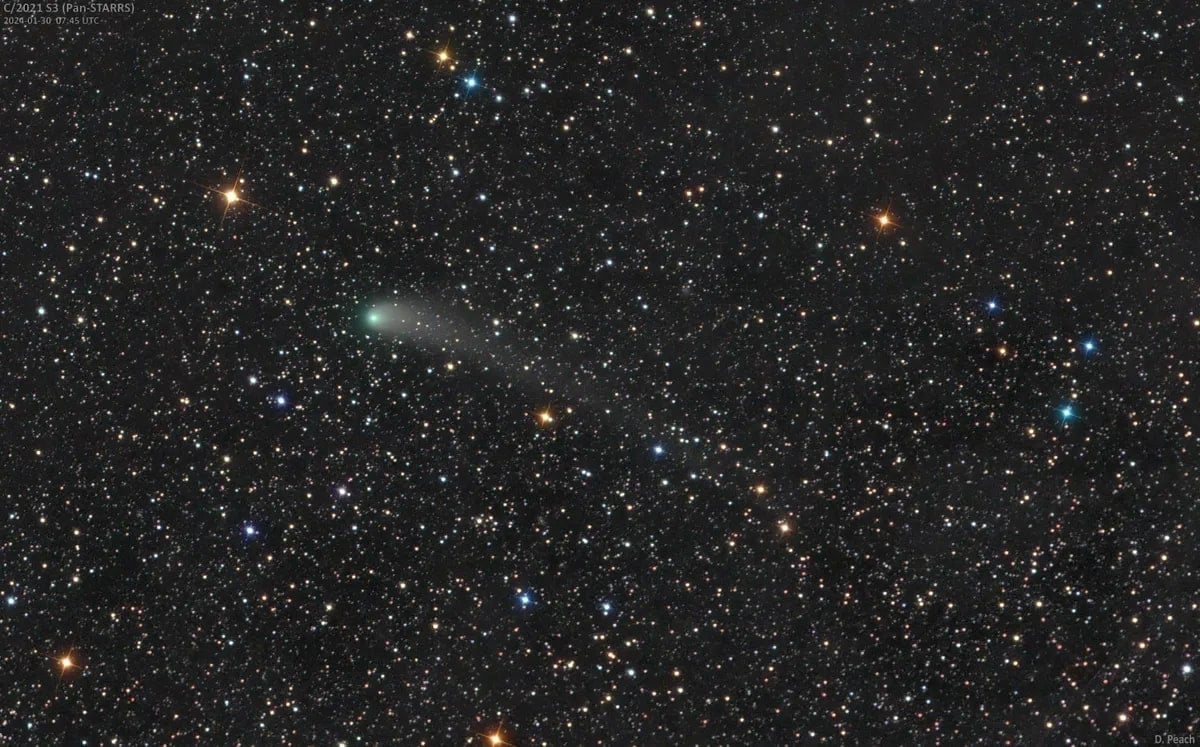
Scientists are calling on astrophotographers to capture a comet’s broken tail and keep the Earth safe from the Sun.
According to researchers at the University of Reading, U.K., a comet named C/2021 S3 PANSTARRS is set to pass by Earth this spring — and may be missing it tail.
The researchers say that the comet poses no danger to Earth and is about the same distance from our planet as humans are from the Sun.
However, they eagerly want photos of the comet from astrophotographers to improve forecasts of space weather.
These forecasts are vital to prevent problems caused by solar winds, which are streams of particles containing solar storms that can damage technology in space and on Earth.
“What we are expecting to see may look rather unusual,” Sarah Watson, the University of Reading PhD researcher leading the project, says in a statement.
“When we talk about comets, people often think of a large, bright sphere followed by a long thin tail.
“The comet we are observing may look different as its tail could ‘detach’ as it is buffeted by solar winds.
“We need lots of timed photos of the comet to build up a picture of its journey through our solar system.
“This is a fantastic opportunity for amateur astronomers to get out their telescopes, capture a truly spectacular cosmic moment, and make a big contribution to some important science.”
Images of this particular comet will enable the research team to record data about solar wind conditions local to the comet. If the tail detaches from the comet or appears to wobble, the team can determine there was an increase in solar wind activity nearby.
What Astrophotographers Will Need to Capture The Comet’s Tail
The comet has reportedly been visible in the night sky from February 14. However, it will be easier for astronomers and astrophotographers to spot in the coming weeks as it appears further away from the Sun and stays above the horizon in the night sky for longer.
From then onwards, the C/2021 S3 PANSTARRS is expected to be in view until the end of March.
According to the researchers at the University of Reading, the comet will not be visible to the naked eye, so astrophotographers will just require a small telescope to which they can attach a camera or a camera with a big lens to capture the comet.
The researchers advise photographers to look out for a fuzzy object to identify the head of the comet and a bright dash behind it to identify the tail.
The researchers are particularly eager to receive photographs of the comet’s broken tail and if astrophotographers are able to capture this comet, researchers will also require information on the image location and time.
Data and images should be sent to [email protected] and the best photographs will be sent to the British Astronomical Association to be archived.
There is a full guide on how to photograph a comet that can be found on the BBC Sky at Night Magazine website.
Image credits: Header photo by Damian Peach via University of Reading
